Research on biologics, the study of the human genome, and the development of precision diagnostic tools and software have led to new hopes for the development of promising precision medicine. At the same time, the life-sciences commercial sector is still struggling with the challenges of payment structures and value assessment frameworks.
As originally conceived, personalized medicine referred to the tailoring of medical treatment to the individual characteristics of each patient (as defined by President Obama’s Council of Advisors on Science and Technology). This ultimately led to a shift in the clinical treatment paradigm from a trial-and-error approach to “the right drug, for the right patient, at the right time."
According to a McKinsey report, a combination of public investment, biotechnology development, and digitization of health profiles has evolved personalization beyond therapy selection and into the realm of drug discovery, how care is planned for and delivered, and increasingly, to how consumers engage with companies seeking to improve health.
The right drug for the right patient has since evolved to an approach that takes 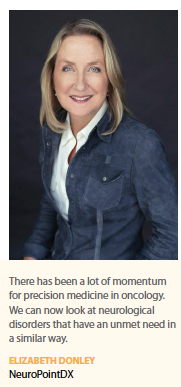 into account individual differences in people’s genes, environments, and lifestyles. This approach received a boost from President Obama’s Precision Medicine Initiative. The Initiative launched in 2015 with $215 million investment to pioneer a new model of patient-powered research that promises to accelerate biomedical discoveries and provide clinicians with new tools, knowledge, and therapies to select which treatments will work best for which patients.
into account individual differences in people’s genes, environments, and lifestyles. This approach received a boost from President Obama’s Precision Medicine Initiative. The Initiative launched in 2015 with $215 million investment to pioneer a new model of patient-powered research that promises to accelerate biomedical discoveries and provide clinicians with new tools, knowledge, and therapies to select which treatments will work best for which patients.
According to the Precision Medicine Initiative, precision medicine is “an emerging approach for disease treatment and prevention that takes into account individual variability in genes, environment, and lifestyle for each person." This effort leads to better selection of disease targets and identification of patient populations that demonstrate improved clinical outcomes.
According to the National Research Council, precision medicine refers to the tailoring of medical treatment to the individual characteristics of each patient. It does not literally mean the creation of drugs or medical devices that are unique to a patient, but rather the ability to classify individuals into subpopulations that differ in their susceptibility to a particular disease or in their response to a specific treatment.
Personalized medicine, on the other hand, is a multi-faceted approach to patient care that not only improves the ability to diagnose and treat disease, but offers the potential to detect disease at an earlier stage, when it is easier to treat effectively, according to the Personalized Medicine Coalition.
The Precision Medicine Era
Precision medicine holds great promise for improving patient health outcomes. Experts say we are just at the beginning of the precision medicine era. Further, precision medicine will have a major impact on how doctors and patients think about disease and how patients are treated.
Over the past five years, healthcare’s collective understanding of what 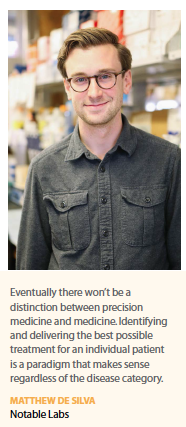 constitutes precision medicine has evolved from the simple mandate of “one patient, one drug" to a more complex data, analytics, and business model ecosystem.
constitutes precision medicine has evolved from the simple mandate of “one patient, one drug" to a more complex data, analytics, and business model ecosystem.
Precision medicine research is being driven by a number of factors, including accelerated scientific discovery in genomics and immunology, increased availability of patient data, and advancements in informatics and artificial intelligence.
About 7% to 10% of patients today are able to benefit from an approved precision medicine, says Dan Rhodes, Ph.D., CEO and co-founder, Strata Oncology, which has developed a next-generation sequencing based screening test.
“The hope is that these new precision medicines will benefit all cancer patients," he says. “Even with emerging precision medicines in clinical trials representing another 20% or 30% of patients, there are still many patients not benefiting from precision medicine."
Dr. Rhodes predicts that in the next couple of years there will be more single agent and combination immunotherapy studies leveraging biomarkers to hone in on responsive patient populations.
“Over the next five years we’ll see precision medicine approvals go beyond the targeted therapy space of oncogenic drivers of cancer and transition to the immunotherapy space," he says.
The opportunities for precision medicine are endless, says Alif Saleh, CEO of Scipher Medicine, which is developing a diagnostic platform that analyzes RNA data from blood samples.
“About 90% of patients who are prescribed the top 10 selling drugs in the world don’t actually respond to therapy," he says. “This tells you the size of the problem. We are in the beginning of an era where more and more precision medicine technologies will come into the market to solve these problems."
While many novel approaches are still in early stages, it’s important to keep in mind that the first immune checkpoint inhibitor was approved only eight years ago, and only two years ago did we see the first-ever therapy approved based on genetics rather than tumor type, says Chad Clark, president of Precision for Medicine.
“These advancements extend beyond oncology, with the first gene therapy approval just 15 months ago," he says. “There are now trials under way with cancer vaccines, cell and gene therapies, gene editing, and many other novel 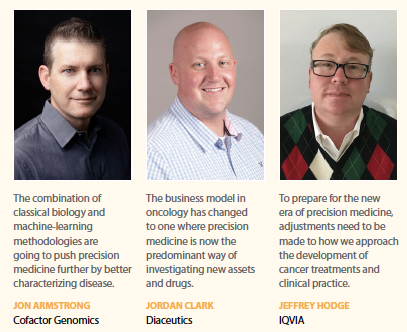 approaches. While it remains to be seen which of these strategies will have the greatest impact, there are significant indicators that many of them will lead to approvals with lifesaving or life-altering results."
approaches. While it remains to be seen which of these strategies will have the greatest impact, there are significant indicators that many of them will lead to approvals with lifesaving or life-altering results."
Eventually there won’t be a distinction between precision medicine and medicine, says Matthew De Silva, founder and CEO, Notable Labs. “Identifying and delivering the best possible treatment for an individual patient is a paradigm that makes sense regardless of the disease category," he adds.
Precision Medicine Research Trends
Recent regulatory nods — including Merck’s Keytruda and Bristol-Myers Squibb’s Opdivo, approved in 2017 — mark important milestones for cancer treatments approved based on a common biomarker rather than the location in the body where the tumor originated.
A PwC survey of global leaders in the pharmaceuticals industry shows that companies are aware of the promise: 92% identified precision medicine as an opportunity, and 84% have it on their corporate agenda. Most point to clear advantages in drug development, such as reducing time-to-market and making R&D processes more efficient. Even a conservative estimate puts the cost-savings in drug development at 17%, leading to a potential annual savings of $26 billion worldwide.
Samit Hirawat, M.D., executive VP, head of oncology global development at Novartis, says very few of the molecules in the company’s pipeline don’t have a precision medicine component.
“Our focus is to identify patients who are going to have outcome improvements if we are able to identify molecules that are specific to genetic markers," he says.  “In breast cancer, for example, our efforts in precision medicine have been ongoing for some time. Novartis was the first company to present positive data for progression-free survival, the primary endpoint of the study for patients with hormone receptor-positive HER2-negative advanced breast cancer whose tumors have harbored a PI3-kinase mutation."
“In breast cancer, for example, our efforts in precision medicine have been ongoing for some time. Novartis was the first company to present positive data for progression-free survival, the primary endpoint of the study for patients with hormone receptor-positive HER2-negative advanced breast cancer whose tumors have harbored a PI3-kinase mutation."
Dr. Hirawat says Novartis has an in-house team in Oncology Precision Medicine that works with the diagnostic division called Navigate. These teams work on assay development to support clinical trials and work with partners for companion diagnostics.
“Our vision always has been to have a more holistic approach to looking at a tumor rather than the specificity and identification of the mutations," he says. “We want to understand the factors that can drive resistance or response of the therapy to the tumor.
These are not only critical to today’s drug development, but allow us to identify mechanisms that we need to target for tomorrow’s drug development."
Researchers from Grand View Research say trends such as cost-effective genomic and molecular biology testing methods, increasing prevalence of cancer and rare diseases, and rising use of big data in precision medicine are some of the key factors boosting market growth. In fact, the global precision medicine — diagnostics/therapeutics — market size is expected to reach $85.5 billion by 2025 at a 9.9% CAGR.
Industry experts say oncology has been an important beachhead for precision medicine due to efforts to understand how unique each patient is and how much the same disease can vary from patient to patient or over time within the same patient.
“In oncology we have shown a whole host of specific biomarkers and specific mechanisms of actions for drug-able targets," says Jordan Clark, chief technical officer, Diaceutics, a data analytics and implementation services company. Specifically, the company focuses on the diagnostic testing required to guide selection of such medicines.
“Looking at clinicaltrials.gov, about 73% of clinical trials in oncology are biomarker-enabled," he says. “This shows the business model in oncology has changed to one where precision medicine is now the predominant way of investigating new assets and drugs."
But he says precision medicine is lagging behind in other therapeutic areas, such as cardiology, autoimmune, and CNS diseases. “For example, with Alzheimer’s disease, there has been a couple of high-profile clinical trial failures over the last year with an unknown convincing biomarker strategy. There is still a great need to understand the root causes of Alzheimer’s disease and the genetics and increasingly important multi-omics that are contributing to Alzheimer’s disease."
Jeffrey Hodge, VP of development solutions, oncology center of excellence, IQVIA, says precision medicine will continue to grow in importance in oncology because of wider patient profiling and greater pressure to match patients to drugs.
“I anticipate this trend to continue as more investment — pharmaceutical and venture capital — is made in oncology than other therapeutic areas combined," he says. “Efforts in immune and inflammatory disease linking precision  medicine have been ongoing for some time without great success. Rare disease is certainly a major growth area now, but targeting genetic diseases requires a genetic diagnosis by definition in most cases.
medicine have been ongoing for some time without great success. Rare disease is certainly a major growth area now, but targeting genetic diseases requires a genetic diagnosis by definition in most cases.
Neurodegenerative diseases are also an important focus for precision medicine with new treatments needed."
Precision Medicine Beyond Oncology
Industry experts say researchers are beginning to consider precision medicines for non-oncologic diseases. This has resulted in greater focus on immunological, genetic, and rare diseases.
The combination of classical biology methods brought together with machine-learning methodologies are going to push precision medicine even further by better characterizing disease, says Jon Armstrong, chief scientific officer of Cofactor Genomics, a predictive immune modeling company.
A company developing diagnostics for conditions beyond oncology is NeuroPointDx. The company, a business unit of Stemina Biomarker Discovery, is bringing a precision medicine approach to the diagnosis and treatment of neurological disorders through the application of world-class metabolomics.
The company’s current focus is autism spectrum disorder (ASD). NeuroPointDX has developed and is commercializing testing panels to aid in the early diagnosis of ASD through its CLIA-certified laboratory.
NeuroPointDX’s CEO and co-founder Elizabeth Donley, who has a 22-year son with autism, says: “I know the struggle families face in getting a diagnosis and understanding the treatments to try. There’s still a lot of confusion and lack of precision around how families and physicians address autism. Families read on the Internet about potential treatments others are trying, including modified diets, dietary supplements, attention deficit medicines, hyperbaric chamber treatments, and psychotropic drugs. We believed that there was an opportunity to better understand the underlying biology of this disorder and then to pair that with therapies."
The NPDX ASD test identifies children with specific metabolic subtypes associated with ASD. The test may be used to screen children as young as 18 months. The test also provides metabolic information that may be used to inform a more precise treatment strategy for a child with ASD. The metabolic  subtypes were identified and validated in children 18 to 48 months old in the Children’s Autism Metabolome Project (CAMP), the largest clinical study of metabolism of children with ASD conducted to date.
subtypes were identified and validated in children 18 to 48 months old in the Children’s Autism Metabolome Project (CAMP), the largest clinical study of metabolism of children with ASD conducted to date.
“CAMP has further advanced the hypothesis that children with autism have a different profile from a metabolism perspective," Ms. Donley explains. “We don’t know why there is a difference in metabolism, but understanding that there is a difference and what that difference is 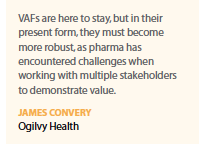 offers us an opportunity for the first time to pair treatment based on metabolism."
offers us an opportunity for the first time to pair treatment based on metabolism."
AstraZeneca’s spin-out Entasis Therapeutics is applying precision medicine to antibiotics to address the growing global issue of antibiotic resistance. The biotech company aims to restore health to people affected by serious pathogens.
“Traditionally, we treat patients according to the body site where the infection occurs, such as pneumonia or urinary tract infections, and often without knowing what pathogen is causing the infection," says Manos Perros, Ph.D., president and CEO, Entasis Therapeutics. “We have been locked in the model of using broad-spectrum antibiotics to cure large numbers of patients without having to understand what infection it is."
Entasis is approaching the research of anti-infectives differently. “Our products are targeting a specific pathogen or group of pathogens," he explains. “For instance, our lead program is targeting a bacterium called Acinetobacter, which can be found in pneumonia but also in the blood, in the urinary tract, as well as in the skin."
With a pathogen-targeted approach for serious, drug-resistant infections, Entasis is tackling some of the most serious infections caused by Gram-negative bacteria. The company’s lead product candidate is ETX2514SUL targeting Acinetobacter baumannii infections associated with high mortality, rapidly increasing rates of antibiotic resistance, growing significance as a hospital-acquired infection, and limited treatment options. Entasis is partnering with Zai Lab in China for this research.
In early April, Entasis initiated its global pivotal Phase III ATTACK trial for the treatment of patients with pneumonia and bloodstream infections caused by carbapenem-resistant A. baumannii. The trial plans to enroll 300 patients worldwide, with top-line data readout expected in the second half of 2020. The company believes this single Phase III trial could be sufficient to support the filing of a new drug application with regulatory authorities in both the U.S. and Europe.
A second product candidate is zoliflodacin, which is targeting Neisseria gonorrhoeae (which causes uncomplicated gonorrhea), and Phase III trials are expected to begin this year in partnership with GARDP. A third product is an oral agent, ETX0282CPDP, targeting multi-drug resistant Enterobacteriaceae infections in partnership with CARB-X. Results from Phase I are expected in the first half of 2019.
“From what we have seen so far, we expect our drug candidates to be not only potent but also more selective and, therefore, safer and better-tolerated," Dr. Perros says. “Broad-spectrum, largely generic antibiotics will still work for a majority of patients, but for those patients for whom those drugs no longer work, we will have much more targeted, tailored, and specific treatments that may save their lives."
Driving Precision Medicine Research
In the past five years there has been progress in collecting, storing, analyzing, and connecting complex medical data, which has reshaped the world. Instead of the traditional model of clinical development based on discrete, methodical trials with relatively small populations, technology advances promise a new paradigm.
Mr. Clark of Precision for Medicine says the days of relying on high throughput screening for identification of drug candidates has given way to a new era of precision medicine where genetic mutations lead the discovery process, enabling targeted drug development.
The linear, phasic approach to clinical trials has also evolved — studies can now be designed in an adaptive manner driven largely by biomarkers and endpoints in early development to allow for flexibility as trials mature.
“This trend will definitely continue, and it is encouraging to see regulators embracing multiple types of adaptive designs, such as umbrella or basket trials, that focus on the underlying mechanisms of disease versus classic pathology or site of origin," he says.
“Progress is being fueled by the vast and new types of ‘omics data that can now be generated, as well as the declining cost of acquiring this data; of course, the data is only as valuable as our ability to efficiently interpret it. Thus, biomarker informatics and artificial intelligence are becoming vital to drug development and will become a foundational aspect of precision medicine development."
Mr. Hodge says with increasing accessibility to genetic analysis tools such as next-generation sequencing, tumor type-agnostic therapy has become a reality, both during clinical development and in clinical practice.
“Adjustments in our approaches to developing new anti-cancer drugs and to adopting these new cancer treatments in clinical practice need to occur as we prepare ourselves for the new era of precision medicine," he says.
Mr. De Silva says an ever-growing body of knowledge shows just how unique each patient’s disease really is. “A major inflection point will happen when patients have access to tools allowing them to advocate for themselves so they can get the individualized care they need," he says. “Technology is inserting itself into healthcare systems as well. This has unlocked large biological data sets, such as DNA/RNA sequencing and proteomics, metabolomics, electronic medical records, and with that a greater understanding of health and disease. Software and data science capabilities now exist to analyze all the data in time and costs that previously were unimaginable."
Commercializing Personalized Medicine
Even though personalized medicines have accounted for more than 20% of FDA approvals in the past five years, the life-sciences commercial sector is still struggling with the challenges of payment structures and value assessment frameworks, as well as the need to educate physicians and patients on how personalized medicine works.
The FDA has opened the door for science and technology to advance into targeted therapy, however, not enough has been done in terms of changing the payment policies for reimbursement, as well as the way physicians make treatment decisions. Continuing to make either reimbursement or treatment decisions based on data from patient population averages, which has been common in the past, is not going to help to lower the cost of healthcare.
“In personalized medicine, all of the stakeholders, no matter who they are, need to come together to create a shared value whereby patients will receive better products and society will benefit because over time the cost of healthcare will go down," says Edward Abrahams, Ph.D., president of the Personalized Medicine Coalition (PMC).
Several organizations are striving to elevate personalized medicine as a model of 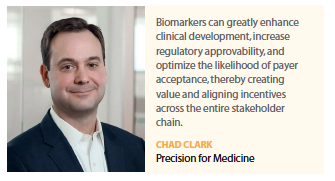 care in the eyes of policymakers, to encourage them to apply new reimbursement and regulatory rules for a precision medicine protocol.
care in the eyes of policymakers, to encourage them to apply new reimbursement and regulatory rules for a precision medicine protocol.
For example, the PMC, representing innovators, scientists, patients, providers, and payers, promotes the understanding and adoption of personalized medicine concepts, services, and products to benefit patients and the health system. “The coalition was created to speed up the translation of the science to the patient by dealing with the multiple barriers that exist between the science and the patient," Dr. Abrahams says.
Another organization working to fast-track personalized medicine is the Kraft Precision Medicine Accelerator at Harvard Business School. It aims to expedite the development and delivery of cancer treatments by improving the business processes that make them possible, such as direct-to-patient outreach and the aggregation and analysis of data.
Kathy Giusti, chief mission officer and founder of the Multiple Myeloma Research Foundation, is co-chair of the Kraft Precision Medicine Accelerator, which is focused on driving precision medicine across cancers and other diseases.
“We realized in order to cure cancer, we had to start by breaking the disease down into specific work areas, and we brought the best and the brightest up to the Harvard Business School campus to work on these areas," Ms. Giusti says. “We did not want to repeat the models of going to a meeting, speaking on a panel, etc., which rarely results in the transfer of knowledge. Instead, we identify a challenge, we invite people to come together to solve the problem, and then disseminate the findings for the world to see."
The Kraft Precision Medicine Accelerator publishes information from all of its projects on its website, and HBS programs such as Harvard Business Review.
Last year, PMC issued a report, Personalized Medicine at FDA: A Progress & Outlook Report, which summarizes FDA’s progress in 2018 in reviewing diagnostics and treatments that can guide personalized healthcare strategies.
The report defines personalized medicines as those therapeutic products for which the label includes reference to specific biological markers, identified by diagnostic tools that help guide decisions and/or procedures for their use in individual patients.
The report suggests that U.S. policymakers could help address rising healthcare costs by putting policies in place that encourage personalized medicine.However, many policies ignore the trend toward therapies that have information in their labels about the populations they will likely benefit, such as the Trump Administration’s decision to encourage commercial insurers administering Medicare benefits to implement step therapy policies that require patients to try cheaper treatments before gaining access to more expensive options under Medicare Part B. The PMC report notes that by the time a patient who will likely respond to a personalized therapy first completes a less expensive, one-size-fits-all course of treatment for a disease such as cancer, the disease may have progressed so far that the personalized treatment can no longer help.
“Driving treatment decisions by cost considerations rather than determining what treatment would work best for an individual patient fundamentally 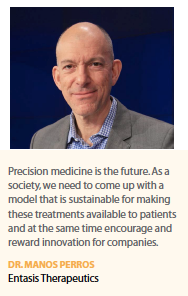 conflicts with personalized medicine, and in many cases will increase downstream costs brought on by continued progression of disease and more adverse side effects," the report reads.
conflicts with personalized medicine, and in many cases will increase downstream costs brought on by continued progression of disease and more adverse side effects," the report reads.
To-Market Challenges
The industry faces many challenges when bringing personalized medicine to market, not the least among them regulations, reimbursement, and clinical adoption.
“All three remain open questions because medicine today is locked into a one-size-fits-all trial-and-error world, and we’re trying to move to a system that would be targeted, preventive, and more efficacious than the one we’re currently in," says Dr. Abrahams. “But systems don’t change easily, especially in healthcare and especially without evidence that change will produce a better paradigm."
In addition to those big three challenges, there’s another one, according to Jeremy Schafer, Ph.D., senior VP for the Access Experience Team at the healthcare agency Precision for Value. “As we continue to move into a value-based world, the requests for data are likely to increase rather than decrease," he says. “The biggest challenge the market runs into is data. Capturing relevant data and being able to report it is the key factor."
If a provider hasn’t been collecting or transmitting this type of data in the past, this will be a big up-front challenge. Providers need to make sure that there are systems in place to collect data and send it to the interested party in a way that is meaningful to them. “In the agreements that we’ve looked at between pharmaceutical manufacturers and payers, capturing the right data and being able to report it is usually the biggest challenge."
Capitalizing on personalized medicine will require not only a business shift but also a cultural one.
The average health plan, pharmacy benefit manager, or pharmaceutical manufacturer, will be focused on short-term goals — financial performance in the next year or even the next quarter, Dr. Schafer says. However, as the industry moves to a value-based model, the long-term picture becomes more important.
In order for the full benefits of personalized medicine to be realized, reimbursement must be commensurate with value. Currently, few payers are willing to cover new personalized medicine technologies in a timely fashion.
“There’s been a lot of discussions in Washington and around the country about the unaffordability of drugs, and that conversation misses the point that increased value may be more desirable than any price point one is paying," Dr. Abrahams says. “The payers have been slower to figure out that they should look more at value than at price."
At the same time, there has been some movement away from common reimbursement models to alternative payment models, such as pay-for-performance arrangements.
As evidenced at February’s Senate Finance Committee hearing on drug pricing, pharma is willing to enter into outcomes-based arrangements with payers and several have been increasingly adopting this value-based model.
The challenge is to get payers, the public, and providers to buy into that new system. In contrast to outcomes-based approaches, the Trump administration’s proposed International Pricing Index (IPI) would undermine personalized medicine by tying drug prices to those paid by other countries, without consideration of their value to patients and the U.S. health system, Dr. Abrahams says.
The IPI will shift market dynamics from relying on U.S. commercial insurers’ negotiations to linking drug prices to the International Pricing Index, he says. This proposal phases in over a five-year period from 2019 to 2023, applies to half of the country, and only covers drugs in Medicare Part B. In 2024, the first year the model is fully implemented, it is projected to save Medicare Part B $6.4 billion.
“While there’s an emphasis on getting the cost down as low as possible, the overriding point is: where are we getting value in the healthcare system?" Dr. Abrahams asks.
Currently, the proposal includes step therapy, which means patients have to try cheaper drugs first before getting a more expensive medication. “This solution doesn’t seem to make a lot of sense to me, where in order to determine the most likely treatment, the physician tries the least expensive treatment first rather than the best treatment based upon a particular diagnostic," he says. “This approach flies in the face of the principles of personalized medicine."
The Oncology Care Model (OCM), implemented by CMS several years ago, aims to provide higher quality, more highly coordinated oncology care at the same or lower cost to Medicare. Under the OCM, physician practices have entered into payment arrangements that include financial and performance accountability for episodes of care surrounding chemotherapy administration to cancer patients.
Regulators and agencies need to pay more attention to the approaching value-based model when designing payment models, as some can be counterintuitive or even detrimental to outcomes.
“Alternative payment models need to consider that the goal is to get everybody to a high level of care," Dr. Schafer says.
Dr. Abrahams contends that few value assessment frameworks favor personalized medicine, and the ones that do are designed to appreciate the principle of individual variation and incorporate that into any value framework that is being developed.
Value Assessment Frameworks
The ICER value framework describes the conceptual framework and set of associated methods that guide the development of ICER evidence reports. The value framework is the backbone of rigorous, transparent evidence reports that is a basis for broader stakeholder and public engagement.
Dr. Abrahams criticizes ICER for being static in a dynamic care arena. “ICER is a one-time analysis based upon clinical trial data, not real-world evidence," he says. “It doesn’t change over time. It also does not incorporate how different patients are impacted by the therapy, but rather is based on population averages. Averages are easy to calculate, but medicine needs to be sophisticated, and if it is sophisticated then these value frameworks can work well."
James Convery, VP, management supervisor, Ogilvy Health, agrees. “These frameworks, in their present form, must evolve and become more robust, as pharmaceutical manufacturers have encountered challenges when working with multiple stakeholders to demonstrate value," he says. “Successful pharmaceutical players will be the ones that embrace and partner to leverage and shape VAFs."
Pursuing a leadership position will assist manufacturers in optimizing their drug development process, strengthening collaborative relationships and partnerships within the healthcare ecosystem, facilitating, providing uniformity around guardrails and patient-care decision-making, solidifying positioning and product differentiation, and expediting product access.
Pharmaceutical manufacturers need to be prepared for the value-based model and the more prepared they are, the better it will work out for them. Dr. Schafer reiterates the importance of manufacturer input for VAFs.
“The pharma companies that have been successful are the ones that take part in this process, engage in it, and understand when an analysis comes up short," he says. “We’ve worked with a number of manufacturers and they have seen ICER analyses change from the draft report to the final because of these types of insights."
Payers are starting to include VAFs in their regular assessment protocols and they will become a mainstay within the healthcare ecosystem, Mr. Convery predicts.
For example, in August 2018, CVS Health announced that it would allow its Caremark clients, which include employers, unions, health plans, and government payers, to exclude drugs from their formularies that don’t meet a benchmark of $100,000 per quality-adjusted life year, based on an analysis by ICER.
“CVS’s intended use of the ICER value assessment framework to strictly apply a singular cost-effectiveness threshold when reviewing new treatments raised 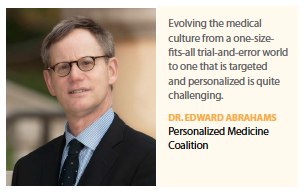 concerns throughout the healthcare community and highlights some of the challenges pharmaceutical manufacturers may experience with the use of VAFs," Mr. Convery says.
concerns throughout the healthcare community and highlights some of the challenges pharmaceutical manufacturers may experience with the use of VAFs," Mr. Convery says.
The PMC argues that the value frameworks that are employed must be sophisticated enough to incorporate how patients are different and also how they progress over time.
“Because we want to get the most value for any particular patient and for that system, it’s not a one snapshot deal that will determine the price of any particular therapy," Dr. Abrahams says.
According to Dr. Schafer however, VAFs aren’t all bad. There are some benefits in terms of cost-effectiveness, and they at least serve as a starting place for better care at lower cost.
“There’s plenty of criticism and certainly parts are valid on methodology and how ICER could improve its analyses, but it does serve as a post in the ground, and it’s worth it," he says. “We work with a lot of different pharmaceutical manufacturers, both big and small, and a big portion of what we do every day is help manufacturers tell that story of the value of their pharmaceuticals."
Clinician Adoption
Wide variability exists among providers when it comes to familiarity with personalized medicine. Specialists, such as oncologists and those practicing and/or affiliated with academic medical centers, have more experience with genetic testing, especially compared with primary care physicians and community-based practitioners.
“Getting physicians, especially in community settings, to adopt personalized medicine approaches has proved challenging," Dr. Abrahams says. “It’s even challenging in institutions that say they practice personalized medicine. So we do need a lot more education for healthcare providers, but also for patients. And we need a lot more evidence to show that personalized medicine does increase value for particular patients and the health system."
Michael Zilligen, market access practice lead, Ogilvy Health, says education and preparedness are key.
“Education and the plethora of patient assistance programs — for drugs and diagnostic testing — are a step in the right direction, but we still have a way to go," he says. “If pharma accelerates its efforts, in partnership with genetic testing companies and advocacy, everyone will benefit, especially patients."
Mr. Zilligen points to this example: In 2011, crizotinib was first approved for anaplastic lymphoma kinase positive non-small cell lung cancer (ALK+ NSCLC), and genetic testing was still relatively new to oncologists. Outside of clinical trialists and researchers, oncologists had rarely, if ever, tested for this mutation. Lack of awareness of the mutation, together with lack of effective treatment options for the 3% to 7% of patients who were ALK+, represented significant 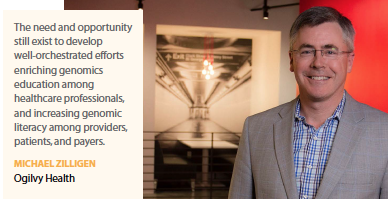 barriers to uptake despite impressive efficacy results. It took considerable and sustained effort over many years of provider education by the manufacturer and testing companies to increase patient identification and realize the benefits of this personalized approach to treating patients with ALK+ NCSLC.
barriers to uptake despite impressive efficacy results. It took considerable and sustained effort over many years of provider education by the manufacturer and testing companies to increase patient identification and realize the benefits of this personalized approach to treating patients with ALK+ NCSLC.
“Fast forward to today, and learnings from this experience present near-term opportunities for further contributions from pharma," Mr. Zilligen says. “With the recent launch of larotrectinib, a tumor agnostic breakthrough highly effective in patients with the TRK fusion, the manufacturer was better prepared for the commercial introduction. The company offered educational tools so providers were informed about this mutation as well as how to test and treat TRK+ patients in their clinics."
Mr. Zilligen predicts personalized medicine will become an increasingly prevalent feature of many clinicians’ practices. Healthcare providers have come a long way in the past two decades. Still, despite breakthroughs in therapeutic options for select mutations and hereditary diseases, as well as advances in genetic testing, providers and payers would still benefit from additional information.
“This can occur either through education or the generation of real-world evidence to fully appreciate the immense potential of personalized medicine," he says. “The need and opportunity still exist for drug manufacturers, genetic testing companies, and patient advocacy groups to develop well-orchestrated efforts enriching genomics education among healthcare professionals and increasing genomic literacy among providers, patients, and payers."
In 2005, Dr. Abrahams and colleagues published a report in the American Journal of Pharmacogenomics about the adoption of personalized medicine. He stated then that it would require changes in healthcare infrastructure, diagnostics, and therapeutics business models, reimbursement policy from government and private payers, and a different approach to regulatory oversight.
Fourteen years later, Dr. Abrahams feels that progress has been made. “Despite all these challenges, we’re making a lot of progress, and that’s evidenced in the number of drugs that were approved last year that are personalized medicines, and I expect that trend to continue because that’s where the science is headed."(PV)
~~~~~~~~~~~~~~~~~~~~~~~~~
Challenges of Value Assessment Frameworks
VAF inconsistencies: VAFs have different audiences, objectives, development processes, methods, and cost-effectiveness measures. Not all frameworks are applicable to all situations. There are instances where different frameworks have been used to compare the value of a single drug entity for the same patient population and evidence base, and the results have been inconsistent.
Definition of value: There is a lack of consensus across stakeholder communities in defining the value of a health care treatment. How do we define value? How do we measure value? How do we measure value from the perspective of which stakeholder(s)? How do we assess value relative to combination regimens? How do we assess prescriptions servicing multiple indications?
Patient-centric value assessment: Many VAFs fall short in their efforts to meaningfully assess value from the context of the patient. A comprehensive consideration of the benefits to the patient is critical.
Personalized medicine vs. VAFs: Although personalized medicine and VAFs both strive to maximize the value of dollars spent on healthcare, most VAFs do not sufficiently capture the value of personalized medicine, focusing instead on population health, thereby overlooking efficiencies in patient-level healthcare.
Dynamic landscape: VAFs need to be nimble to account for a changing landscape.
Source: James Convery, Ogilvy Health
~~~~~~~~~~~~~~~~~~~~~~~~~
FDA’s Efforts to Modernize Clinical Trials to Advance Precision Medicine
In March 2019, the FDA released guidance for sponsors on how they can incorporate patients with more challenging health conditions into oncology clinical trials. This includes patients with brain metastases or previous malignancies; patients with organ dysfunctions.
The agency had also released additional guidance for industry on strategies that can support the development of precision medicines, and guidance on risk-based monitoring that can be accomplished through the incorporation of more computerized systems for effective oversight.
These guidances, Enrichment Strategies for Clinical Trials to Support Determinations of Effectiveness of Human Drugs and Biological Products, and A Risk Based Approach to Monitoring of Clinical Investigations: Questions and Answers Guidance for Industry, can help facilitate efficient development of novel innovations, while also generating the robust evidence needed to better assess product safety and efficacy.
Regulatory leaders say they are committed to developing a regulatory framework for precision medicine that generates robust evidence of product safety and efficacy as efficiently as possible, including frameworks that are more carefully suited to the kinds of precision technologies that underpin new treatments.
The agency has worked closely with stakeholders, including the Clinical Trial Transformation Initiative, to identify innovative trial designs, evaluate the role of decentralized clinical trials and mobile technologies, and help validate novel endpoints that can enable trials to generate reliable evidence needed to assess product safety and efficacy more efficiently. For instance, the FDA has pioneered master protocol trial designs that can evaluate, in parallel, different drugs compared with their respective controls or to a single common control. These trials can be updated to incorporate new scientific information, such novel biomarkers, as medical science advances. The infrastructure for these trials can last for decades.
~~~~~~~~~~~~~~~~~~~~~~~~~
The Harvard Business School Kraft Precision Medicine Accelerator
The Kraft Precision Medicine Accelerator was established in 2016 with a $20 million endowment from the Robert and Myra Kraft Family Foundation Inc. to advance high-priority opportunities in precision medicine. Co-chairs Kathy Giusti, founder of the Multiple Myeloma Research Foundation (MMRF), and Richard Hamermesh, senior fellow at Harvard Business School, lead a diverse team of healthcare and business visionaries in four integrated workstreams: direct to patient, data and analytics, innovative trials, and venture and investment.
Last year, the Harvard Business School Kraft Precision Medicine Accelerator brought five leading cancer organizations together to share best practices, engage patients, and create synergies to advance precision medicine opportunities across cancers. The organizations include LUNGevity Foundation, the Metastatic Breast Cancer Alliance, the MMRF, the Pancreatic Cancer Action Network (PanCAN), and the Prostate Cancer Foundation.
Together, they created the “Right Track," a framework to help patients optimize their treatment journey while connecting them with patient-focused organizations. The Accelerator DTP developed the Right Track using this market research with the goal of closing these knowledge gaps and improving outcomes.


















